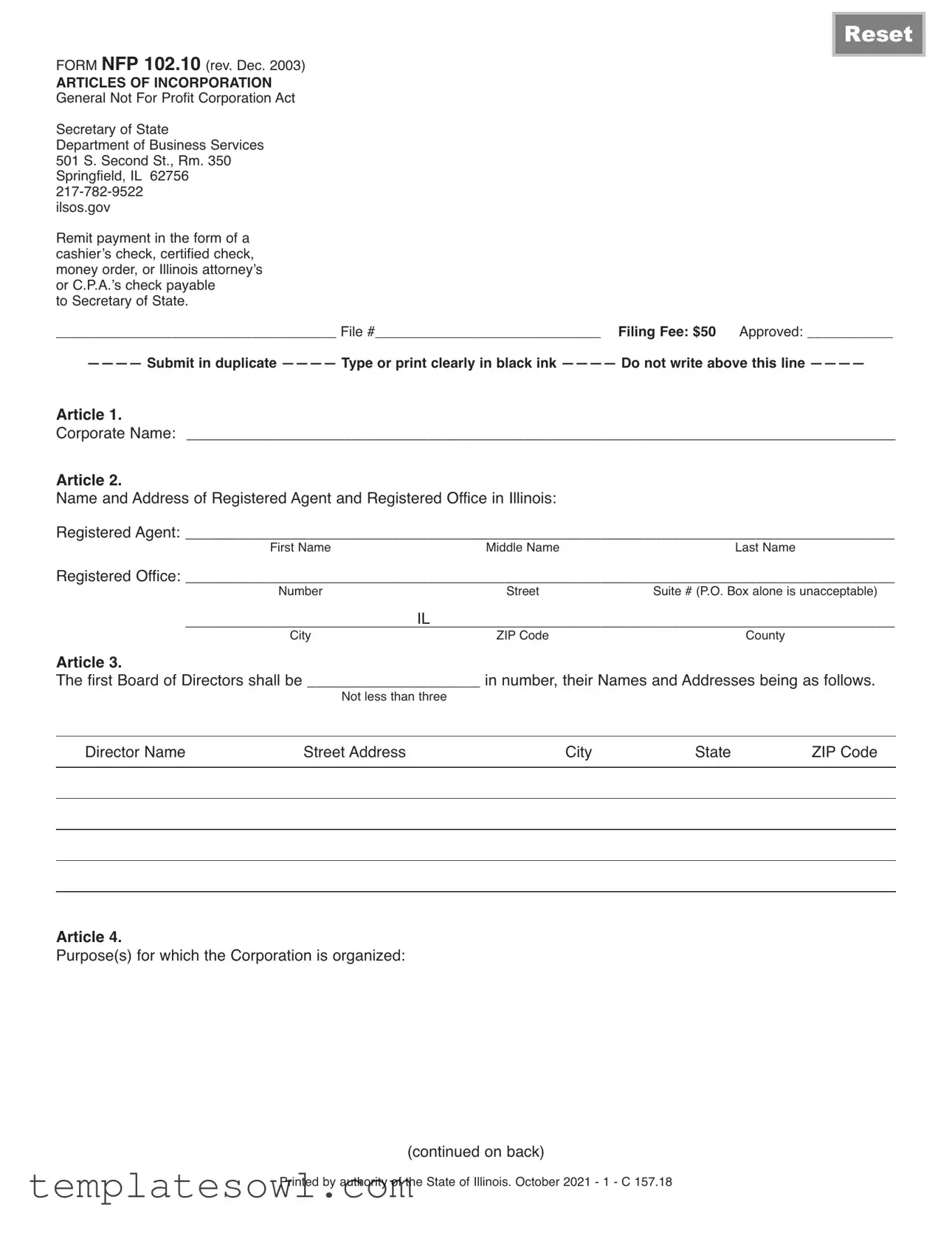What is the Nfp 102 10 form?
The Nfp 102 10 form is utilized for filing Articles of Incorporation for a Not For Profit Corporation in Illinois. This document is essential for legally establishing a nonprofit organization in the state, setting the foundation for its operations and governance.
What is the purpose of the Nfp 102 10 form?
This form serves to officially register a nonprofit corporation. It outlines crucial information about the organization's name, purpose, and structure. By completing and submitting this form, you are taking the first step to gain legal recognition for your nonprofit initiative.
What are the filing fees associated with the Nfp 102 10 form?
The filing fee for the Nfp 102 10 form is $50. This fee must accompany your application and can be paid using a cashier’s check, certified check, money order, or a check from an Illinois attorney or CPA.
Who must be included as a registered agent?
A registered agent is a person or entity designated to receive legal documents on behalf of the nonprofit corporation. The registered agent should be a resident of Illinois or a corporation authorized to act in that capacity. Importantly, the nonprofit itself cannot serve as its own registered agent.
What if my nonprofit has more than three directors?
You can list more than three directors in the designated section of the form. Ensure that you provide their names and addresses accurately. There is space to include additional directors if necessary—simply attach another sheet with the required information.
Can the registered office be different from the principal office?
Yes, the registered office does not have to be the same as the principal office. However, it must be a physical location in Illinois, and a P.O. Box alone is not acceptable.
What should I do if my organization does not fit any specified categories?
If your nonprofit does not fall into the categories mentioned—such as a condominium association, cooperative housing corporation, or homeowner's association—you can simply mark “No” to those questions on the form. Proceed to explain your organization's purpose clearly.
Is there a specific format for signatures on the Nfp 102 10 form?
Yes, all signatures on the original document must be in black ink. Photocopies, carbon copies, or rubber-stamped signatures cannot be used on the original but are acceptable on any duplicate copies submitted.
Where do I submit the Nfp 102 10 form?
Submit the completed Nfp 102 10 form to the Illinois Secretary of State’s Department of Business Services. The address for submission is 501 S. Second St., Rm. 350, Springfield, IL 62756. Make sure your submission includes the requisite fee.
What if I have more questions about the Nfp 102 10 form?
If you have further questions or need assistance, please feel free to contact the Secretary of State's office at 217-782-9522 or visit their website at ilsos.gov. They are there to help you through this process.


